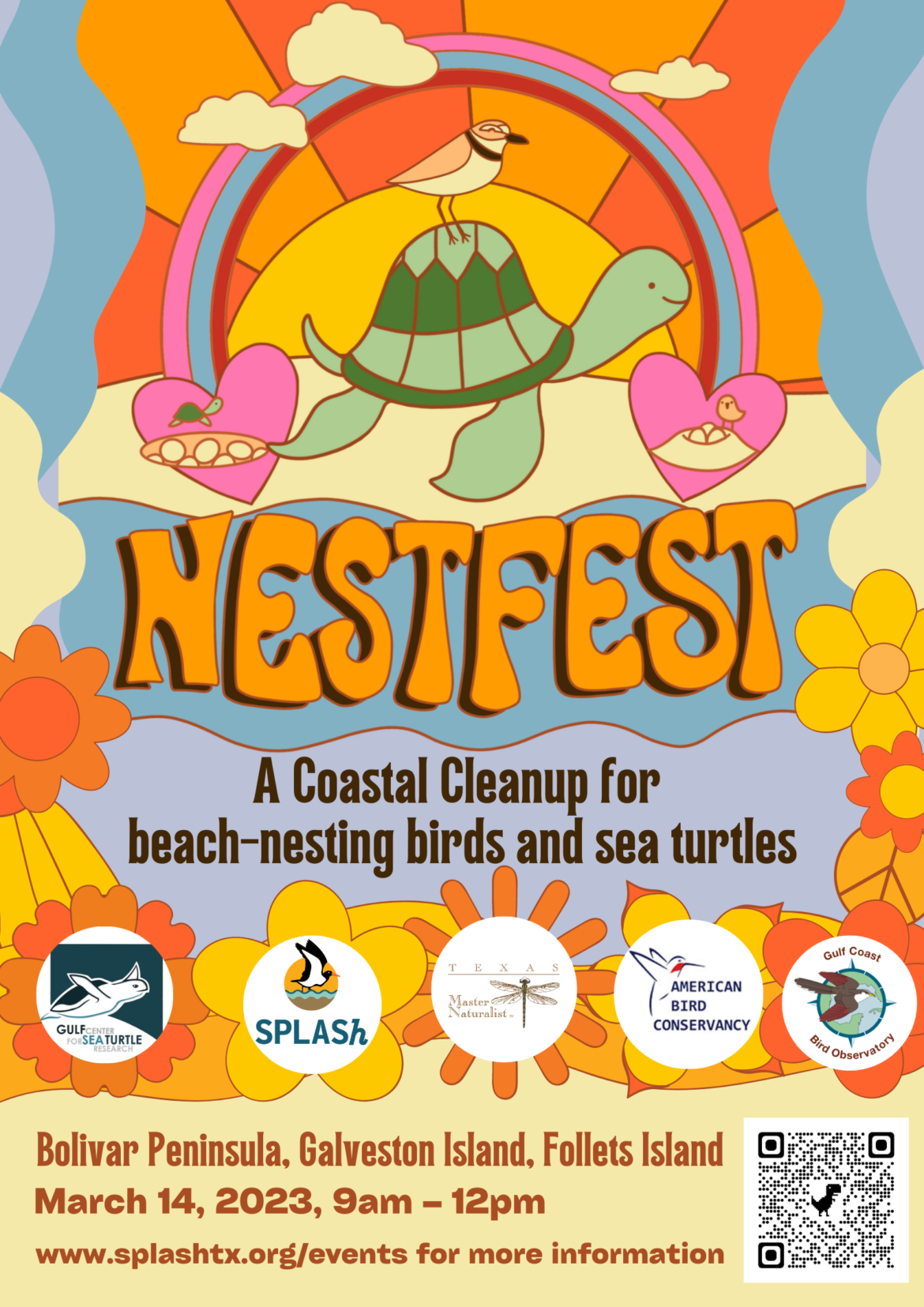
Did you know that there are several animals that lay their eggs on the beach here in Texas? Namely, different species of sea turtles and shorebirds make their nests in the sand or dunes of our shores.
The Gulf of Mexico hosts five of the seven sea turtle species; loggerhead, green, hawksbill, Kemp’s Ridley, and leatherback. All of these turtles are listed as threatened or endangered, so it’s particularly exciting when we see them on or near our shores.
When it’s time for mother sea turtles to lay their eggs, they tend to return to the beaches that they themselves hatched from. They swim to shore, climb up on the beach, and find a good spot to lay their eggs above the high tide line. Then they use their back flippers to dig a hole in the sand and lay the eggs inside. Once done, the mothers return to the sea.
Sea turtles can lay up to 100 eggs at a time, and the eggs need to incubate for about two months. After enough time has passed, the babies hatch almost in unison. They climb out of the hole and hurry towards the surf. They’re easy prey during this time for birds, raccoons, and other predators, so they have to be quick.
The birds that nest on the beach tend to have a slightly different method of child-rearing. Birds such as Wilson’s Plovers, Snowy Plovers, and Least Terns all nest in the sand on the beach. Like the turtles, they carefully choose a spot in the sand where they think their eggs will be safe from the tide. Then they make a slight bowl in the sand called a scrape.
Once satisfied with the scrape, the female will lay her eggs inside. Unlike the turtles, these birds only lay about 3 eggs at a time and they always stay with the nest to incubate their eggs. If they are not able to properly incubate the eggs, their babies will not hatch.
After the chicks hatch, it doesn’t take long for them to start walking. Plover chicks can walk, run, and hunt for themselves within a day or two of hatching. The parents stay close, though, incubating their chicks and making sure they are safe. Tern chicks are a bit less mobile at first and are more reliant on their parents, who bring fish back to the nest for them to eat.
Having your meals delivered fresh on the beach sounds like a pretty good life to me! But there are dangers to being a little baby bird or turtle on the beach: the eggs could be swept away by high tides, eaten by predators, overheated in by the hot sun, or stepped on or driven over by beach-goers! Plus, once hatched, turtles and chicks can become entangled in fishing line or other beach trash. Being tangled or trapped can keep the animal from walking or swimming properly, making it harder to find food and hide from predators.
Many of the sea turtle nests in our area are found by turtle conservation organizations, who take them elsewhere to hatch the eggs in safer conditions. However, because the mother turtles are still using our beaches, it’s still important that we have a safe habitat for them.
With this in mind, several partner organizations are organizing a huge beach cleanup on March 14th to help nesting sea turtles and birds. The event is called NestFest and it is hosted by Stopping Plastics and Litter Along Shorelines (SPLASh), Gulf Center for Sea Turtle Research, Galveston Bay Area Chapter Texas Master Naturalists, American Bird Conservancy (ABC), and Gulf Coast Bird Observatory (GCBO).
We will be cleaning up trash in 12 different nesting areas along the beaches of Follet’s Island (Surfside), Galveston, and Bolivar. And we would love your help! To learn more about the cleanup and sign up to volunteer at one of the nesting sites, go to www.splashtx.org/nestfest
Photo by Susan T. Cook: Snowy Plovers nest and raise their chicks on the beach
Photo by Celeste Silling: Flier for NestFest beach cleanup event

